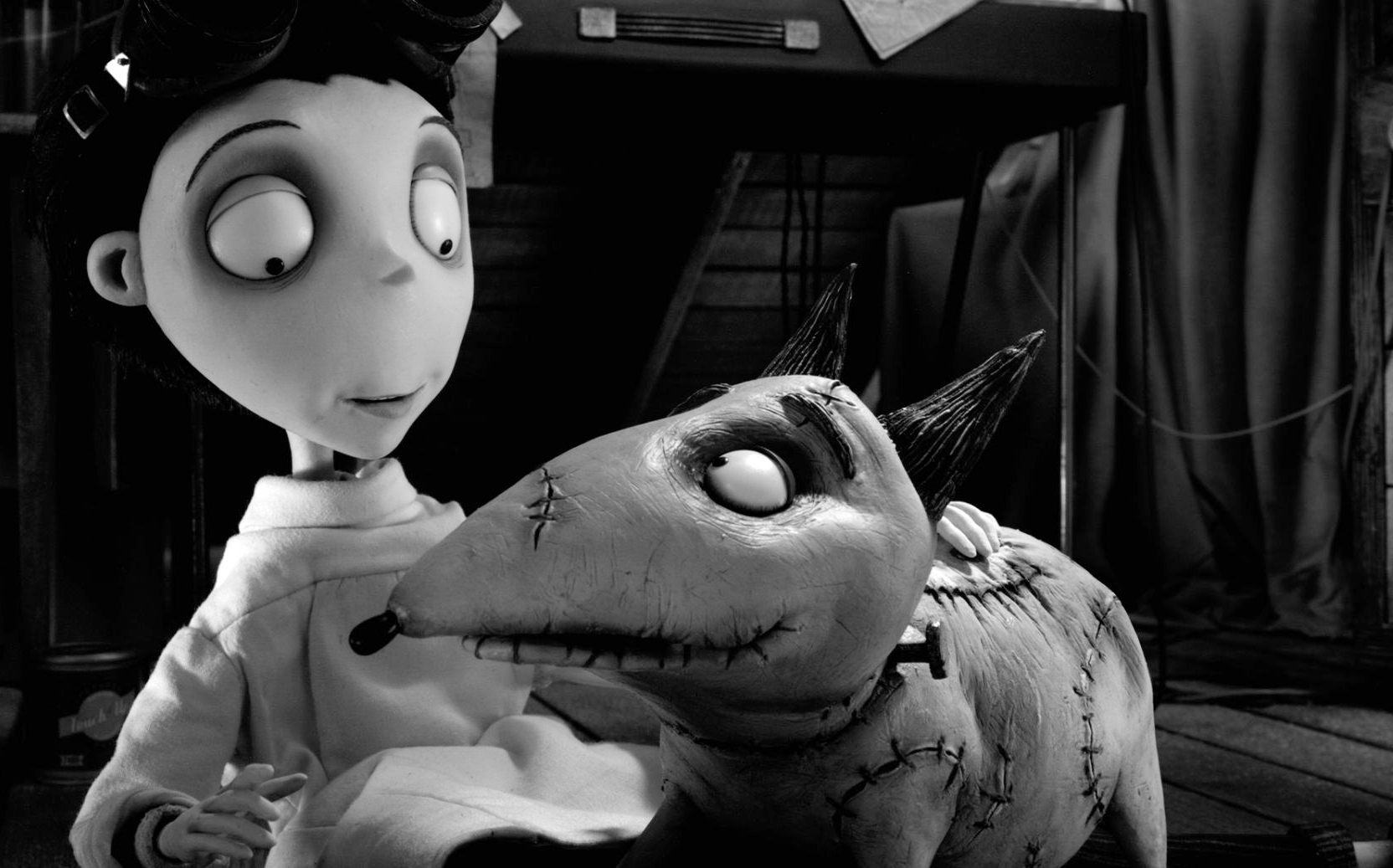The common and morbid fascination with reanimating the dead takes on a cute yet creepy twist in Tim Burton’s new film “Frankenweenie.” Though it isn’t among Burton’s most creative ideas, it takes the audience to a stylistically unprecedented claymation world.
In typical Burton fashion, the director tells the story of a socially awkward yet intelligent boy, Victor, who in a tragic turn of events loses his best friend, a dog named Sparky. He soon becomes fixated with the idea of bringing Sparky back from the dead, a highly unpopular idea in the small town he lives in.
Peppered with references to other monster films such as “Godzilla,” “Dracula” and, of course, “Frankenstein,” the film is, on the surface, endearing although unoriginal. But this doesn’t mean that “Frankenweenie” was painful to watch. It earned its fair share of laughs with its charming allusions to other monster flicks within the characters and through the use of situational irony. Overall it was received as more of a nostalgic piece than a remake.
Artistically speaking, “Frankenweenie” is one of Burton’s most complex films. Burton’s creative decision to make the film black-and-white is a huge source of its artistic appeal. It first acts as a transportation mechanism, taking the viewer back to the ’50s. It also gave Burton the option to really play with shadows, giving the film a very cool, sinister effect.
Burton uses character designs reminiscent of those in “Corpse Bride” and “The Nightmare before Christmas” for the main characters Victor and his parents.
While Burton’s style can sometimes seem redundant, he pulls through and is able to differentiate his new protagonists through character development and situational flair.
Burton does something entirely different with the designs of the supporting characters by creating individuals that are visually exaggerated to resemble past horror film stereotypes, differentiating the new characters from all his past creations.
While the social outcast Edgar “E” Gore is a dead ringer for Frankenstein’s original lab assistant Igor, Elsa Van Helsing adopts a typical goth look very similar to Winona Ryder’s previous role in “Beetlejuice.”
Although these supporting roles create a huge degree of discomfort, as they are visually frightening in addition to being generally unlikeable and unrelatable, they redeem themselves in earming most of the laughs in the film.
Burton sets the film in a fictional town called New Holland. While most of his other films work with highly fantastical settings like Halloweentown in “The Nightmare Before Christmas,” New Holland is a very average and realistic depiction of suburbia.
This normality is a highly contrasting backdrop for the weird characters. The combination of the oddball cast and the regimented suburban setting gives the feeling of inmates in an insane asylum.
Burton takes the discomfort a step further in his characterization of the narrow-minded and oppressive world of 1950s suburbia.
He uses heavily caricatured racial stereotypes in dialogue to show the alienation of those who did not conform to the small-town Caucasian ideal.
Victor’s Russian science teacher Mr. Rzykruski poses as a foil to the closed-minded public by reprimanding the townspeople on their ignorance and stupidity because they reject science. For this, Rzykruski is fired and forced to leave town.
“Frankenweenie” comes across on the surface as a children’s film with a young protagonist and a very basic plotline.
Yet, much of Burton’s stylistic choices, which were intended to critique society, might be lost on a young audience.
In addition, the creep factor of the visuals and the morbid premise may also be prime nightmare material for kids expecting a heartwarming film about a boy and his dog.
“Frankenweenie,” is not a movie just for kids, as it ventures into a more sophisticated realm of claymation.
While this isn’t a novel piece of work, and those expecting something new will be sorely disappointed, viewers hoping for the familiar and creepy cinematic experience typical of all the other Burton classics are in for a treat.
““ Kelsey Rocha
Email Rocha at krocha@media.ucla.edu.
